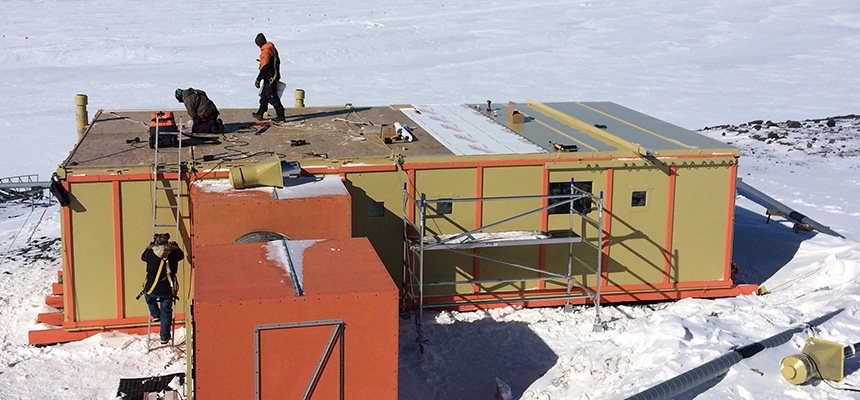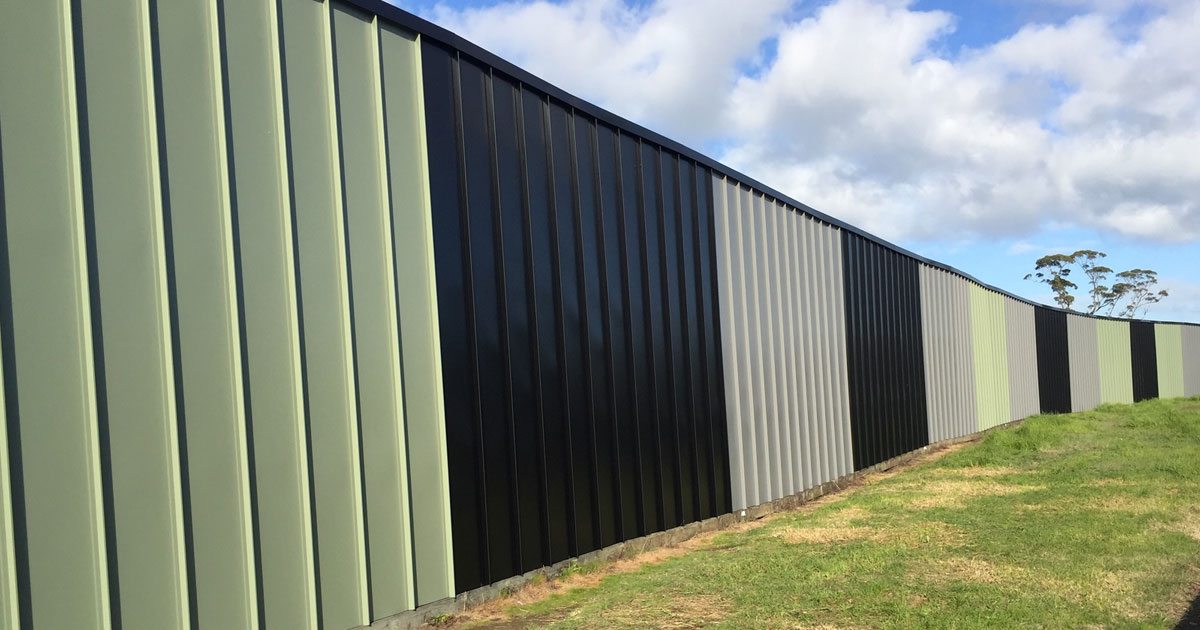The magnificence of Antarctica presents challenges for those restoring an iconic piece of New Zealand’s history – Sir Edmund Hillary’s hut at Scott Base.
Imagine a wintry landscape in every direction. 30 degrees sub-zero and howling 75km/h winds. Working in continual snow and ice conditions, sacrificing warmth for dexterity by removing gloves and exposing skin at times. Carrying tool belts, a harness, and equipment across snow fields. Returning to camping conditions after a full day’s work, to fuel, rest and start again the next day. Although with 24-hour daylight, one day can easily blur into the next.
Sir Edmund Hillary’s original hut was built by his team in 1957 as living quarters. It was fully water proofed and robust at the time, but the ravages of the Antarctic climate had rendered it uninhabitable and it had since been used primarily for storage.
Late last year, the hut was completely restored with roofing and cladding by specialist standing seam roofer, Mike Burgess, well-known for his skill and knowledge of European style roofing. From the get-go, Mike was fully absorbed in the various design aspects that required the restoration to match the original building.
Julian Wai from ColorCote assisted Mike in the decision-making on the material to ensure it would stand the test of time in the demanding conditions of the Antarctic. A strong yet malleable product would be required to work in severely cold temperatures. Many discussions took place around which grade of aluminium should be used, the winner being ColorCote AlumiGard.
The challenges that come with installing a new roof in sub-zero temperatures became apparent to Mike soon after his arrival, even though it was “summer”. Weather checks and appropriate layers (upon layers!) of clothing were requisite starts each morning, to be continually removed and added to throughout the workday. When gloves got in the way, work was done with bare hands until they started freezing. The sheets of aluminium couldn’t be left in contact with the snow so had to be hauled across snowfields after folding, adding to the physicality of the job.
The difficulty of the project didn’t get in the way of the once-in-a-lifetime opportunity to see what life was like for those early pioneers. In the original Discovery hut, Mike saw the ancient artefacts still in place as they were left by the last inhabitants, when they ventured out for the last time without returning – mutton carcasses hanging, biscuits that looked like they were just recently left there, even food left on the stove top. Eerie reminders of both the unforgiving climate and the hardiness of the early explorers.
With restoration complete, Hillary’s hut will protect historic artefacts and serve to further inspire others in their exploration of the Antarctic. It sits among a group of flat-roofed buildings making up New Zealand’s scientific facility at Scott Base, where just as those early Kiwi explorers braved the unknown to explore, today’s scientists and researchers can carry on expanding their work.
ColorCote is proud to have supplied the materials for such an important historic restoration in one of the harshest environments on the planet. Let us provide the right material for your next roofing project – whether it’s famous or not.


